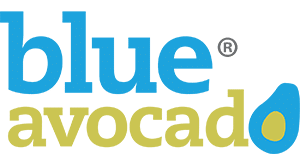The Million-Dollar Question: What Could Your Nonprofit Do if Money Weren’t an Issue?
Want to raise more money? Call a time out and take fundraising completely off the table. Then dream — the money will follow!

I have worked for many nonprofit organizations over the past 30 years. Their balance sheets were all very different; some had endowments of more than $20 million, and others were figuring out their payroll from month to month.
But there was always one similarity they shared — almost all their planning and board dialogue centered around how to grow fundraising. Even regarding the topics of programming and mission, the conversation was almost always couched in the questions of “How much will it cost?” or “How can we monetize it?”
The million-dollar question.
I know it’s an oversimplification, but it seems a bit counterintuitive that organizations who are, by law, not formed for profit have boards who are obsessed with revenue generation. And while I’m certainly not proposing that nonprofits ignore the importance of fiscal stability; I would propose that it’s more important (and more financially beneficial) to have more facilitated, scheduled dialogue regarding a vision statement and how you might get there — regardless of perceived financial constraints.
In other words, take a day or two with your board and staff annually and create an aspirational narrative of what you would do with, for example, an extra $1 million. This is the Million-Dollar Question. But as a reminder on the premise of the meeting — there will be no talk of fundraising or cost. That’s the major way your board will view this differently than a strategic planning meeting. You may very well use this input to drive a more detailed strategic plan, but it’s crucial to keep this high level and stick to the premise.
I promise you — despite the parameters at the beginning of discussion, your board is going to want to talk fundraising and cost. They will have event ideas, celebrity endorsements, lottery-winning scenarios, viral Instagram postings, and GoFundMe campaigns that will all come to the table as viable ideas. Your development staff will want to run out the back door.
Enter the facilitator.
You will have to claw and scrape the discussion back to the question of “WHY do we need $1 million and WHAT would we do with it?” You will have to strategize in advance about how to curtail potential reactive discussions about money and how to get it. And unless you are in the middle of a seven-figure capital campaign, I would bet that, even with a skilled facilitator, the question won’t get definitively answered at the first meeting.
The board will be uncomfortable answering this question because most board members aren’t encouraged to think big enough to answer the million-dollar question. Their job descriptions center around the essentials of governance and fiduciary responsibility. And because of this, there is a little-admitted secret; most board members are woefully uninformed as to the nuts and bolts of how you carry out your mission, let alone how you might reach your vision.
It’s not their fault; most of the board meetings I attended had the typical subcommittee agendas that just barely covered the business at hand. So, when you switch the discussion to one that centers around dreaming, vision, and aspiration for the organization, it’s understandably overwhelming.
And an additional word of caution: Your finance folks on the board and staff will likely not think that this concept is a worthwhile one. Again, it’s understandable. If they are feeling the perceived pressure of watching the dollars, it can seem a little tone-deaf to schedule a chunk of time to talk about dreams without attaching costs.
Show how you can change the world, not why you need more money.
So why push this concept at all? Because if you aren’t deliberate about encouraging stakeholders to dream, the victim will be your organizational case for support. You will raise less money and continue to lose relevance with your donors. Instead of being far-reaching and showing how you can really change the world, your everyday case will argue that you simply need more money instead of showing potential donors what you could do with their transformational support.
It is subtle, but I would assert that it’s the most critical part of your ask. And unfortunately, it’s the part that the board and staff rarely get around to addressing.
The million-dollar question seems easy on its face and many organizations will be tempted to simply reply they will ramp up their mission exponentially to answer it. “If our mission is to help underserved urban youth, then we can help many more youth with $1 million.”
But I would argue that, in today’s world, simply doing more of the same is not a compelling enough answer, nor should it be.
Because if you have a great vision statement, doing more of the same likely isn’t going to get you there. And your entrepreneurial donors, in particular, know this because they themselves have had to be disruptors at some point in order to affect transformational change. Your most important stakeholders won’t buy it.
Consider where you could be without limits.
Ironically, the organization where I worked that did (by far) the best job of promoting aspirational, visionary thinking was one where our revenue margins were the tightest.
We were a small startup nonprofit that promoted youth engagement for community change. Despite being short-staffed with an overwhelming mission, our executive director held a “dream session” every fall. Staff were asked to block out one full week, put their out-of-office reply on, and prepare to immerse themselves in considering where their respective programs could be without limits.
It wasn’t easy to convince the team that this would be worthwhile enough to let work and emails pile up, but we found that this approach naturally elevated the way that we thought about the organization and our work there. We were so energized that the board eventually asked if they could join us for portions of the session. I have not been at an organization since that has been so diligent about this kind of process, and I notice a difference in the culture.
Bring all voices to the table.
That brings me to the last point, which is one more word on the facilitator. For the reasons mentioned above, your board alone will not be able to answer the million-dollar question.
I would encourage you to think of ways to give all staff a way to be present and provide candid feedback on their version of vision. Include the people you serve whenever possible to do the same.
But remember that, for those that don’t regularly attend board meetings, this might not seem like a safe space. A good facilitator will make sure the power dynamics don’t drown them out.
If you are ready to embrace the concept, try appreciative inquiry as a starting place for resources. It’s a way of planning and asking questions that encourages this exact way of thinking. Take all of the feedback and start to incorporate it to elevate both your case for support and how you think about the work that you do. I promise you — the process works!
You might also like:
- Re-Imagining Fundraising: How Funder Education and Systemic-Change Approaches are Changing the Game
- The Ultimate Guide to Nonprofit Fundraising in 2025
- The Best Route to Approaching Donors: Hand-Head-Heart
- Your Nonprofit Got its Grant. Now What?
- Nonprofit Fundraising: Are You Choosing the Right Grants?
You made it to the end! Please share this article!
Let’s help other nonprofit leaders succeed! Consider sharing this article with your friends and colleagues via email or social media.
About the Author
Lindsay Myers, Principal, has 30 years of fundraising experience with significant expertise in case development, fundraising campaigns, startup/turnaround initiatives and strategic planning.
A member of the Association of Fundraising Professionals (AFP) since 1994, Myers earned the Certified Fund Raising Executive (CFRE) designation in 2010; the only accredited, globally recognized certification for Fundraising Professionals that quantifies both ethical and technical professional competencies.
Myers is also a graduate of the National Executive Leadership Institute (NELI) at Bryn Mawr College and is formally trained in Appreciative Inquiry and SOAR Methodology for strategic planning.
Articles on Blue Avocado do not provide legal representation or legal advice and should not be used as a substitute for advice or legal counsel. Blue Avocado provides space for the nonprofit sector to express new ideas. The opinions and views expressed in this article are solely those of the authors. They do not purport to reflect or imply the opinions or views of Blue Avocado, its publisher, or affiliated organizations. Blue Avocado, its publisher, and affiliated organizations are not liable for website visitors’ use of the content on Blue Avocado nor for visitors’ decisions about using the Blue Avocado website.







